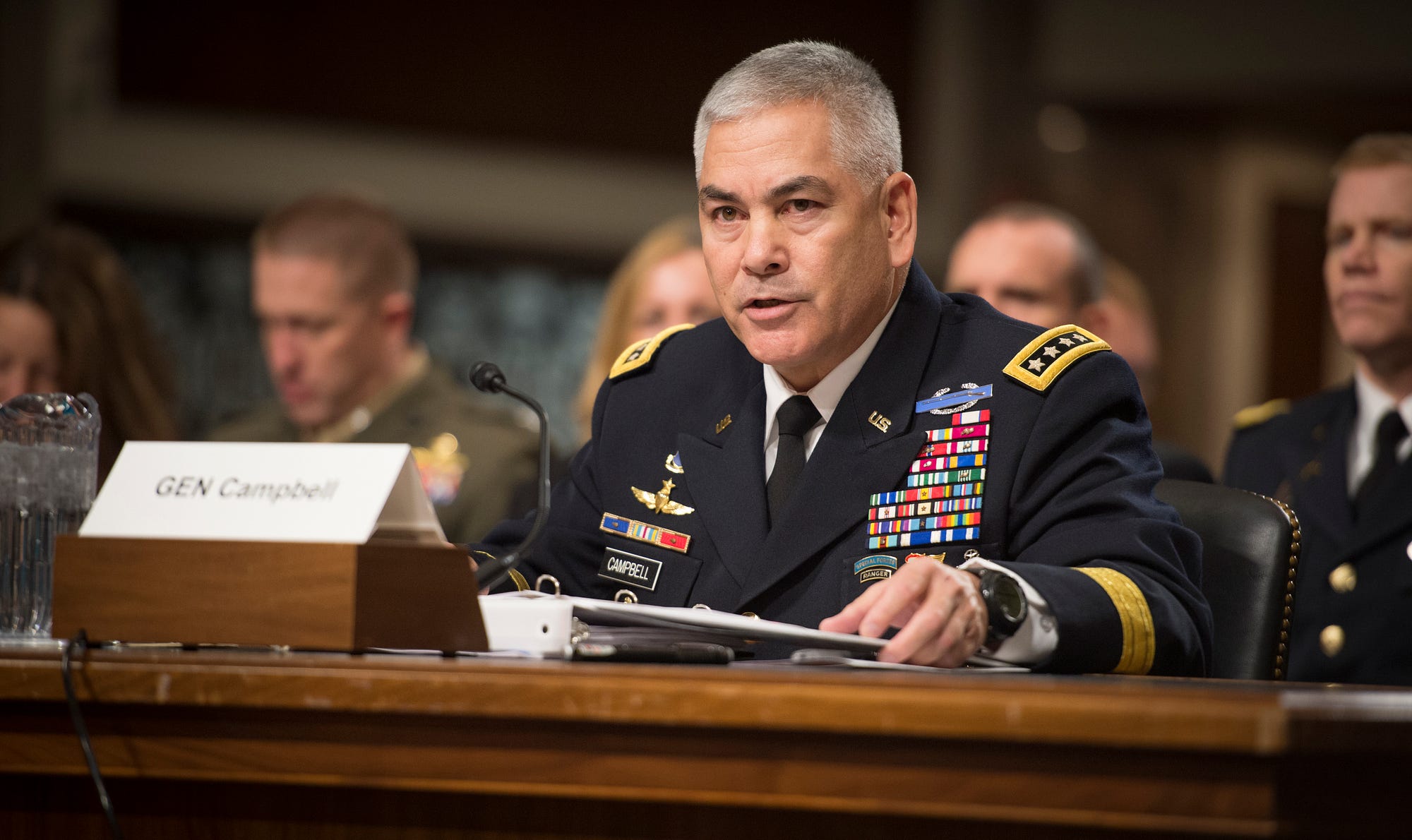by KEVIN KNODELL
For one, there’s Taliban to deal with
On Feb. 9, an American drone strike killed Abdul Rauf Khadim, a former Afghan Taliban leader turned deputy chief of Islamic State’s apparent Afghanistan-Pakistan franchise.
For awhile now, some militants in Afghanistan and Pakistan have been waving the flag of Islamic State—the same terrorist army presently ravaging Iraq and Syria.
“In Afghanistan, we see an initial emergence of ISIS,” Sen. John McCain, chairman of the Senate Armed Services Committee, said Feb. 11 during a hearing on Afghanistan. “The threats are real, and the stakes are high. We cannot let Afghanistan become a sanctuary for Al Qaeda or ISIS.”
But how worried should we be? The answer is—not very.
“Thus far we believe that the nascent Daesh presence in Afghanistan represents more of a re-branding of a few marginalized Taliban,” Gen. John Campbell, commander of U.S. forces in Afghanistan, told senators on Feb. 12.
Campbell added that he takes the potential threat seriously, referring to the group using an Arabic acronym. But even so, the range of challenges the general has on his plate in Afghanistan range far beyond the somewhat recent addition of Islamic State.
The group’s potential aspirations are just one small factor of the general’s unenviable task—helping the Afghan government stabilize their country. He must also consider how events in Pakistan and border security play into this challenge.
“The issue is how long we stay engaged at the regional level in the transition year of 2015,” he said.
 It’s unclear what relationship—if any—the ex-Taliban fighters have with Islamic State’s leadership in Raqqa.
It’s unclear what relationship—if any—the ex-Taliban fighters have with Islamic State’s leadership in Raqqa.
Coalition spokesperson Col. Brian Tibrus recently told The Hill that Taliban groups re-branding themselves is “likely in an attempt to garner resourcesand attention.”
To be sure, there’s plenty of militant groups competing for resources. There’s several Taliban factions, Hezb-e-Islami—an Islamist group loyal towarlord Gulbuddin Hekmatyar—and the Haqqani Network. Then there’s Al Qaeda remnants and many other armed extremist and criminal organizations that populate the region. They’re all dangerous.
As American forces drew down in 2014, attacks against Afghan security forces and government agencies increased. Insurgents killed about 4,000 Afghan troops and police, one of the bloodiest years yet for the fledgling national security forces
Across the border in Pakistan, an army offensive pounded the militants. But in December, foreign fighters loyal to a Pakistani Taliban faction stormed a school in Peshawar, killing 132 children. Special forces troops intervened, evacuating survivors and killing the jihadists.
Taliban leaders gleefully praised the bloodbath. They justified the massacre of the students as retribution for the army’s recent campaign, and vowed to resist by any means.
The Afghan government has officially taken responsibility for its own security. But many experts and officials are concerned about the Afghans’ ability to protect their own bases, let alone maintain regional stability.
Around 13,000 foreign troops—mostly American—are staying behind. While there’s no official “combat troops” in the country, U.S. Special Operations commandos are still fighting largely in secret.
Between the Pakistani offensive to root out militants and steady American drone strikes, the Taliban has suffered some serious blows over the last year. Those efforts—coupled with infighting—dwindled the Taliban’s numbers.
Many of the foreign fighters that once swarmed to Afghanistan and Pakistan have instead flocked to Syria. This could explain why Taliban groups—struggling to stay relevant—might hitch themselves to Islamic State’s brand.
So if Islamic State militants were to try and assert themselves as a dominant force in Afghanistan, what are their chances for success? For starters, there’s a lot of obstacles.
There’s the obvious fact that the governments of Afghanistan and Pakistan are both likely to fight them. The stay-behind American force in Afghanistan will likely respond with air strikes and Special Operations troops.
Though the Taliban and Islamic State are both Islamist movements, it’s doubtful significant numbers of Afghan or Pakistani militants would rush to sign up.
The Taliban’s brand of Islamism is heavily infused with Pashtun tribal customs, which could run into conflict with the Salafist views of Islamic State.
During the summer—on the first day of Ramadan no less—Islamic State’s leader and self-proclaimed caliph Abu Bakr Al Baghdadi apparently called Taliban spiritual leader Mullah Omar a “fool” and an “illiterate warlord.”
A strong Islamic State movement could also run into stiff resistance from the local population. The Taliban’s bloody tactics decreased popular support, particularly in Pakistan. Islamic State’s similar tactics won’t help set them apart.
All this indicates that Islamic State would struggle to become a major player in Central Asia. But that doesn’t mean it’s impossible.
Islamic State was once a relatively small fringe faction in the Syrian civil war. As the regime’s warplanes decimated the Free Syrian Army—and rebels slowly lost faith in the West—Islamic State evolved into a powerful force capable of controlling huge swaths of territory in Syria and Iraq.
Even as the Syrian army, Iraqi Shia militias, Kurdish fighters, Iranian agents and an American-led international coalition all attack Islamic State, the group is yet to fold.
It’d be hard to replicate that stunt elsewhere. But at the same time—it would be hugely arrogant to assume it couldn’t happen.

No comments:
Post a Comment